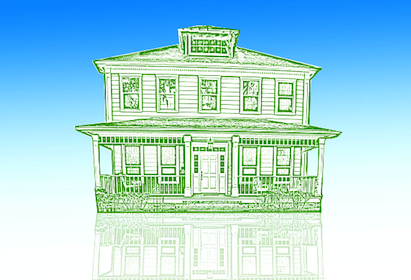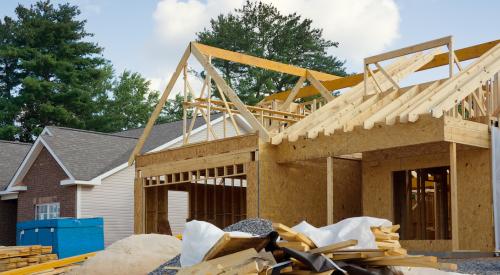Increasingly, home buyers want energy-efficient, durable, low-maintenance, and comfortable homes that are cost-effective to operate. Survey data in the last few years have also shown that consumers are willing to pay a premium for these types of homes and that they are typically more satisfied with them than with their previous, less-efficient homes.
The design and construction of these homes requires more-precise tolerances than with typical code-minimum homes — every system within the structure is interdependent with the others in the whole-house system. Builders need to be more deliberate and exacting with the implementation of high-tech, innovative green products and construction techniques.
Quality management creates a solid process-based foundation for a builder to ensure the right steps are taken at the right time and in the right order to deliver the best product possible to the buyer, in the most efficient manner possible for the builder.
By coupling quality management systems with high-performance home-building techniques, builders are likely to create well-constructed, high-performing homes that lead to satisfied customers and increased profit.
The economics and value of quality
With high-performance homes, energy performance and cost savings are quantifiable. The economic benefits of energy efficiency for both the builder and the homeowner are also quantifiable. Implementing a quality management system for high-performance homes can reduce construction costs and cycle time, and effectively address all of the home’s features.
But there are some builder costs associated with implementing a quality management system. These include the costs for prevention and appraisal, and the cost of failure that can directly affect the economics of energy-efficiency upgrades in a high-performance home (see definitions on opposite page). An effective quality management system creates efficiencies and related savings that are significantly greater than the investments in the quality activities required to achieve the savings. However, the costs of quality can be difficult to measure. Ultimately, the goal is to be able to track the costs and benefits of each to determine the most cost-effective solution.
The goals of a quality program are to reduce the overall cost of quality and to ensure that the majority of costs are spent on preventing and catching defects rather than on correcting failures, especially costly external failures. The aim is to then also reduce the cost of prevention and appraisal in the process. Understanding the cost of quality and its potential impact are two of the most fundamental aspects of quality management.
Measuring the cost of quality
A key step to quantifying quality is measuring the success of quality management in your business. It’s important to document schedules, energy performance, costs, training, satisfaction, referrals, productivity, and warranty/defects. Consistently measuring these elements of your business will allow you to determine where you stand and where you can make improvements to save time and money and increase customer satisfaction along the way. Here’s a breakdown of the key elements that should be measured:
Schedule
Construction schedules (in working days) with milestones — Measuring this allows you to gauge what will constitute on-time delivery of a home by scheduled milestones and hone in on areas for improvement, resulting in opportunities to reduce cycle times and cost.
Some categories to include in this part of your assessment are included below, but these should be customized to your individual construction needs and practices.
- Design
- Contract signing to closing
- Contract signing to excavation
- Excavation, foundation
- Excavation, back fill
- Weather days
- Framing
- Frame start to certificate of occupancy
- Rough mechanical
- Drywall
- Trim
- Pre-punch to closing
- Testing
- Inspections
On-time delivery — To track this, you must first determine your own definition of delivery to the customer (such as closing). Once this is defined and based on the construction schedule, the on-time delivery can be reported as a simple yes or no. Beyond this, you can relate the on-time delivery as a percentage of projects completed.
Energy performance
Air infiltration testing — Results of the blower door test to measure the air infiltration (leakage) of the home to the exterior.
Duct leakage testing — Results of the duct blaster test to measure the leakage of the duct system to the exterior and the interior to determine heat loss and delivery efficiency of the duct system.
Building America Benchmark/HERS Index — This uses energy simulations and air infiltration and duct leakage measurements to estimate the energy use and costs of the home.
Costs
Profits — This details the profits for the project including:
- Gross profit — net sales minus cost of goods sold
- Net profit — gross profit minus total operating expenses.
Inspection costs — This details all costs involved in checking and re-checking someone else’s work and includes labor, vehicle use, fuel costs, etc. Ideally, of course, installers would have checked their work and executed it properly the first time, but that can be addressed and improved upon once you begin to quantify this information.
Verification costs — This details the costs to verify the performance of the home, including air infiltration testing, duct leakage testing, and any third-party program verifications/certifications, such as Builders Challenge, Energy Star, and National Green Building Certification.
Warranty costs — This can include all costs, including labor, fuel, trucks, material, and time for rework and repair for customer callbacks. It can also include litigation and insurance costs.
Training
Training costs — Includes all training courses, books, and other materials, and may include overhead for internal management time for training and time taken from work to attend certain companywide meetings.
Satisfaction levels — customer, employee, and trades
Customer satisfaction — This is a score reflecting detailed aspects of the construction process and the overall satisfaction of the client with the process and finished product. The higher the score, the better the chance of referrals and return work in the future.
Warranty customer satisfaction rating — This can be a detailed customer satisfaction score or sub-score that allows you to focus on sub-sections of your post-construction/warranty process and key individuals in that process. This helps focus on specific areas for improvement.
Construction manager customer satis-faction rating — Similar measurement to warranty customer satisfaction rating discussed above.
Trade/supplier satisfaction — This metric provides insights into the satisfaction of your trades and suppliers. Finding new trade partners, evaluating them, and training them to meet the construction and delivery schedules is time consuming and expensive. It’s most cost effective to maintain your experienced trade partners. A trade/supplier satisfaction survey allows you to uncover dissatisfaction you can address. It also provides your trades and suppliers with an opportunity to suggest improvements that may save time or money on the job. As with customer satisfaction surveys, there are various rating systems, survey approaches, and time periods for conducting trade/supplier satisfaction surveys.
Employee satisfaction — This provides insights into the morale and culture of your organization and is focused on reducing the rate of employee turnover by gaining feedback on how you can make the work life of your employees better. Hiring and training new employees is very expensive; maintaining your trained, experienced, existing employees is a good investment. There are various rating systems, survey approaches, and time periods for conducting employee satisfaction surveys.
Referrals
Referral rates — This details the percentage of customers that actually referred someone to your business.
Productivity
Sales per employee — This measures gross sales/revenue divided by the number of employees and provides insights into your company’s productivity level.
Units/projects per employee/trade — This is another measure of productivity.
Warranty and defects
Number of warranty calls — This can be measured as callbacks per customer/home sold. Obviously, the fewer the better. The fewer there are, the higher the customer satisfaction and referral rates will be. And, of course, fewer callbacks helps reduce unnecessary costs incurred that can impact your profit margins.
Time to complete warranty calls — This is measured in days from the time the customer called until the work is completed. If the customer calls back later with the same issue, that means the issue was not adequately resolved and the re-work required to resolve the issue is measured (in length in days), along with the initial re-work. This reflects how well your company responds and corrects issues the first time. Longer times to complete warranty issues result in reduced customer satisfaction scores, chances for referrals, and potentially in the customer “poisoning the well” on your reputation with other potential customers.
Walk-through pre-punch defects — This is the number of defects found by the inspector or superintendent on a final walk-through of a home. This number is reflected in defects per square foot of the home. The more defects found, the more rework needs to be done. This is unnecessary (it was not done correctly the first time even though you paid for it) and further reduces your profit margin.
Customer walk-through defects — The number of defects found by the customer during the final walk-through. This number is reflected in defects per square foot of the home. High numbers of defects will reduce your customer satisfaction score and also the possibility of referrals.
Quality management techniques can benefit any builder, but they are particularly advantageous for high-performance-home builders who need to meet an increased level of precision and scrutiny. Effective quality management techniques ensure homes are built as designed and help builders take trial features and details and incorporate them into their standard building practices. Bottom line, quality management principles can help save significant time and money for high-performance home builders.
Much of this information was compiled from the NAHB Research Center’s work as a Building America team and from our many years of administering the National Housing Quality Program. For more information on how documented quality management systems can improve your business, visit www.toolbase.org/quality.
Created in 1964, the NAHB Research Center (www.nahbrc.com) is a full-service product commercialization company that strives to make housing more durable, affordable, and efficient. The Research Center provides public and private clients with an unrivaled depth of understanding of the housing industry and access to its business leaders.













